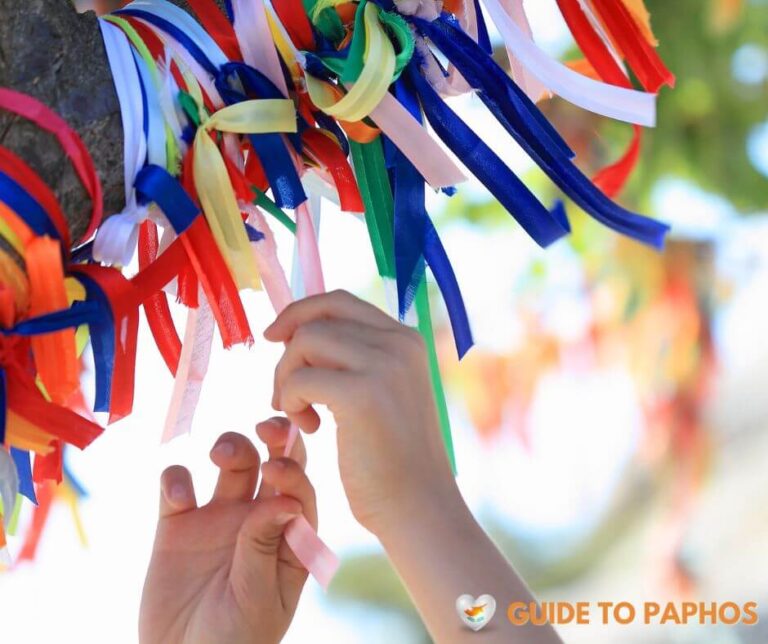Have you ever set foot in the magical and mystical country of Cyprus? The rich cultural heritage, stunning scenery, and hot weather make this destination ideal for your getaway.
But if there’s one thing that stands out about Cyprus above all else—it’s the wishing tree!
Many island travelers are drawn to this particular tradition—but what is a wishing tree, exactly? Today’s blog post provides a comprehensive guide to the ancient practice of “tree-hugging” at Cyprus’ wishing tree.
From understanding their historical significance to knowing where to find these incredible landmarks—you won’t miss this opportunity to learn more about these iconic symbols of good luck!

What is the handkerchief tree in Paphos?
If you’re a fan of handkerchiefs and miracles (who isn’t, really?), you’re in for a treat on your way to Agia Solomoni Catacomb.
You will notice the Wishing Tree near the entrance – an ancient, sacred site that’s been around since the 12th century.
And let’s be honest, anything that’s been around that long has to be legit.
Legend has it that tying a rag to the tree after a visit to its chapel can cure all sorts of ailments, from the common cold to even more severe diseases.
So if you’re feeling a bit under the weather, why not give it a try? Worst case scenario, you’ve added some flair to the Wishing Tree’s impressive collection of handkerchiefs.
In the best-case scenario, you’re cured and can return to enjoying your trip to the Harbour or Fabrica Hill.
It’s a win-win, folks!
Why on earth are there bits of cloth hanging from a tree?
Well, my friends, it’s all part of the wishing game.
Visitors to the tree believe that tying a piece of cloth to its branches will help their prayers get answered faster than you can say “hocus pocus.”
And what kind of prayers, you ask? Oh, just like fertility, good health, and caring for loved ones in the afterlife. No biggie.
And hey, if you forgot to bring your handkerchief (we’ve all been there), don’t fret! There’s a handy-dandy kiosk nearby where you can purchase one.
Some people even take things up a notch and inscribe their prayers onto the cloth with a pen – talk about next-level wishing.
So go ahead, make a wish, tie that cloth, and see what happens – who knows, maybe your dreams will come true!
Which color should the ribbon be?
The branches are decked out in some seriously stylish rags and bits of clothing left by the faithful as offerings to the saint.
You can choose whatever color you want, depending on the nature of your request.
Traditional red stands for passion and courage, while pink is often used to ask for love and understanding. White symbolizes peace and serenity, while yellow denotes joy and sunshine—so pick whatever feels right in your heart!
I’m just kidding… the color means nothing. There’s no wrong or right color.
I chose yellow because it reminded me of the song “Tie a yellow ribbon ’round ol’ Oak tree.”
Anyway, I’m still waiting for my wish to come true. But don’t worry, dear wishing tree – I have time!
In conclusion
The wishing tree is a beautiful and powerful symbol in Cyprus.
Attaching a rag or piece of cloth to its branches is believed to help make prayers come true—and it’s up to you to decide which color ribbon will do the trick!
So take some time on your visit to this historical landmark and make sure to make a wish!









